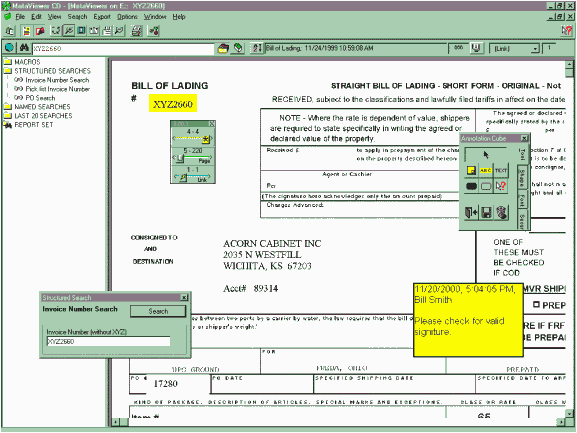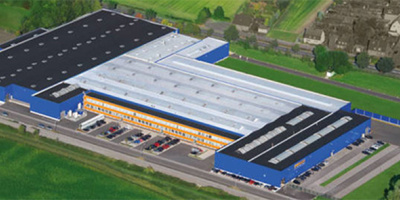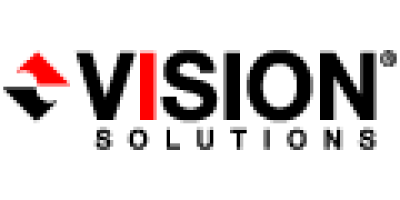IMI Cornelius Americas Inc., a maker of beverage-dispensing equipment, saved $89,820 in the first year after implementing a Computer Output to Laser Disk (COLD) and imaging system from Metafile Information Systems.
By capturing reports created internally on the company's AS/400 and downloading them to the network, the COLD system has dramatically reduced the number of printed documents. This saved the company $63,470 by eliminating many printer and paper expenses as well as storage and retrieval costs. IMI Cornelius recovered the $60,000 cost of the imagine system in the first year. "We saw huge savings as soon as we implemented this technology," said Mike Hierlinger, network specialist at IMI Cornelius. "And although it's more difficult to quantify, employees now find the documents they need in minutes, which improves customer service." The imaging portion of the system digitally captures printed-paper forms for storage within the same database, saving another $26,350 in document handling and storage expenses.
A division of Britain-based IMI plc, IMI Cornelius Americas Inc. is the world's leading supplier of beverage-dispensing equipment. The company manufactures and markets a full line of post-mix and pre-mix dispensing systems, ice machines, juice and tea dispensers, frozen carbonated beverage machines, hot beverage dispensing systems, beer dispensers, and accessories. IMI Cornelius has manufacturing and sales offices in over 30 countries on five continents and employs more than 3,000 people worldwide.
No More Printing and Storage Costs
IMI Cornelius uses an IBM AS/400 computer to manage its operations. Various departments--such as sales, accounting, purchasing, information systems, and customer service--use the AS/400 to generate reports and other documents. In the past, these documents were printed on laser or ink jet printers and then distributed among the staff. The large volume of documents that the company printed each year represented a significant expense. Annual savings realized by eliminating just the six most frequently used reports included $4,000 for paper, $14,100 for toner cartridges, $1,500 for laser printer maintenance kits, and $2,700 in labor for printer handling activities. All this adds up to a total savings of $22,300.
Eliminating storage costs also generated significant savings. Documents that were not discarded were stored for one year in filing cabinets. After they were more than a year old, they were sent off-site to long-term storage at a facility 30 miles away. Filing cabinet space in the office claimed 150 square feet of floor. At the going rate in manufacturing facilities of $50 per square foot, eliminating the on-site storage space freed up an area that the company was spending $7,500 per year to maintain.
In addition to on-site space, it cost the company $1,500 per year to rent the off-site storage space. There were other costs of maintaining the off-site storage, including storage boxes and administrative expenses. The company estimates that it was also spending a significant amount on related activities, such as picking up, delivering, and recycling the boxes. On average, each time someone needed a document from storage, it cost approximately $10 to retrieve and deliver it; this method was not cost-effective at all.
IMI Cornelius' four other manufacturing plants generated similar--although somewhat lower--printing and storage savings by gaining access to the system through Metafile's Remote Retrieval Client. A total of $12,000 was saved annually among the four plants.
Handling and storage of existing printed forms--those not generated by the AS/400--represented another expense. IMI Cornelius was paying an annual salary for a file clerk position, in addition to paying off-site storage costs for the documents. The total cost eliminated by scanning and indexing these existing documents into the Metafile system was $26,350.
The above savings were not the only reason to eliminate the use of hard copy documents, however. A more serious concern was that employees didn't have timely access to the information that the company was paying so much to put in storage. At least one day was required for obtaining documents from the off-site storage facility. Documents in the filing cabinets were more readily accessible but still required that employees get up from their desks and retrieve them. As a result, many queries from customers could not be answered immediately. Customer service was suffering.
Metafile to the Rescue!
The management team at IMI Cornelius began searching for technology that would reduce the cost of document printing and also improve access to documents. The team learned that a COLD system, which reads host report files and distributes them over a network, would eliminate the need to print the internal reports. Since the documents are stored in a central database, they are also easily accessible from users' computers. Because some documents, such as shipping contracts and invoices, still need to be printed, IMI Cornelius also wanted a way to archive images of these documents and add them to the central document database. After researching the technology, Hierlinger decided that the combination of a COLD system and an imaging system that scans documents and stores them digitally would address the company's document handling needs.
Hierlinger's team evaluated products from three vendors. Their main requirements were affordability, a Windows-based system, and good integration between COLD and imaging. The team learned that while it was easy to find an economic solution to address just one of these needs, the higher-end systems that were capable of handling both COLD and imaging in a single integrated solution generally ran into millions of dollars and took years to implement.
Then Hierlinger heard about Metafile, a Rochester, Minnesota-based company that offers COLD, imaging, and workflow in a single integrated solution at a reasonable price. The company provides print capture and imaging products that feed a single print output and imaging warehouse. The solution provides full-text indexing, which allows for much broader searching capability and greatly reduces setup costs when compared to a more traditional, field-based approach. Documents can be easily written to CD-ROM or hard drives for storage. The information stored in the document warehouse can be accessed with a Windows client or over the Web. This was important to the Cornelius team, because its members wanted to implement the COLD and imaging solutions at the manufacturing sites as well as at company headquarters.
Another factor in Metafile's favor was its concurrent licensing policy. Unlike other vendors that require the purchase of a license for every user, Metafile would allow Cornelius to buy a license for 15 concurrent users and let the company load the software onto 100 computers. "This makes the technology available to more people within the company while holding down the cost," Hierlinger said. The cost of the COLD system, including the Metafile software, installation by the vendor, and two Windows servers was approximately $60,000.
System Implementation
Metafile performed the initial software installation after Hierlinger and one of his colleagues had attended a brief training session provided by the software vendor. As part of the initial installation, Cornelius selected six daily, high-volume internal reports to process. This went very smoothly and no host-code changes were required.
Cornelius currently stores data on a hard disk located on a RAID 5 server with daily backup to tape. CD-ROMs will eventually supplement this RAID 5 server as storage volumes increase.
After completion of the initial system implementation, Hierlinger trained users on how to use the COLD and imaging systems, using live training for employees at headquarters and video conferencing for those at the manufacturing plants. IMI has continued to add reports to the Metafile system and is currently processing well over 200 reports. Hierlinger estimates this has saved IMI an additional $15,000 in printing and storage costs.
Hard and Soft Benefits
The COLD system reads spool files from the AS/400 and converts them to compact, searchable files that reside on the Windows server. The software automatically scans a specified location for a new spool file and, if it is found, automatically downloads and indexes it. The information is then available to users on their computer screens, so that instead of waiting for reports to be distributed, they can access information almost as soon as reports are created. Rather than paging through reports to find the relevant information, they can perform a text search and zero in on any section they want in just a few seconds.
Not only do they have almost immediate access to all documents from their desks, they have better tools for compiling information, resulting in better interactions with customers. For example, when an employee in the service department is working to solve a problem for one customer, he or she can search the database by invoice to find other companies using the same type of equipment and contact them to determine if they are experiencing similar problems. The accounting staff can also search the database for all records relating to a particular customer, quickly determining the status of that account. These types of searches were not possible in the past.
The imaging functionality of the system permits access to scanned documents stored on the AS/400--such as customer purchase orders, packing slips, and bills of lading--with a single query.
To further streamline paper indexing, several preprinted barcodes are read as the documents are scanned; this information is cross-referenced to the existing AS/400 database. If the barcode data is valid, a number of other fields from the AS/400 database are automatically used to index the documents. This is all done in batch mode and any exceptions are routed to the appropriate queue for review.
Operating the imaging system requires a quarter-time position, but this is balanced out by the elimination of the file clerk position and the other storage and handling costs.
As IMI Cornelius' thorough analysis indicates, COLD and imaging technologies yield quantifiable benefits that make it easy to justify the cost of the equipment. Eliminating printing, storage, and related labor costs quickly pays for such systems. Other benefits are harder to quantify, but equally important. These include more efficient use of staff time and quicker, more complete responses to customers.
Jerry Fireman is president of Structured Information.
Metafile Information Systems, Inc.
Four Greentree Center, Suite 105
Marlton, NJ 08053
Tel: 856-985-3100
Fax: 856-985-7401
Web: http://www.metafile.com

Figure 1: Here is a sample screen shot from a Metafile system that IMI Cornelius uses to effectively manage its data needs.





















 More than ever, there is a demand for IT to deliver innovation. Your IBM i has been an essential part of your business operations for years. However, your organization may struggle to maintain the current system and implement new projects. The thousands of customers we've worked with and surveyed state that expectations regarding the digital footprint and vision of the company are not aligned with the current IT environment.
More than ever, there is a demand for IT to deliver innovation. Your IBM i has been an essential part of your business operations for years. However, your organization may struggle to maintain the current system and implement new projects. The thousands of customers we've worked with and surveyed state that expectations regarding the digital footprint and vision of the company are not aligned with the current IT environment. TRY the one package that solves all your document design and printing challenges on all your platforms. Produce bar code labels, electronic forms, ad hoc reports, and RFID tags – without programming! MarkMagic is the only document design and print solution that combines report writing, WYSIWYG label and forms design, and conditional printing in one integrated product. Make sure your data survives when catastrophe hits. Request your trial now! Request Now.
TRY the one package that solves all your document design and printing challenges on all your platforms. Produce bar code labels, electronic forms, ad hoc reports, and RFID tags – without programming! MarkMagic is the only document design and print solution that combines report writing, WYSIWYG label and forms design, and conditional printing in one integrated product. Make sure your data survives when catastrophe hits. Request your trial now! Request Now. Forms of ransomware has been around for over 30 years, and with more and more organizations suffering attacks each year, it continues to endure. What has made ransomware such a durable threat and what is the best way to combat it? In order to prevent ransomware, organizations must first understand how it works.
Forms of ransomware has been around for over 30 years, and with more and more organizations suffering attacks each year, it continues to endure. What has made ransomware such a durable threat and what is the best way to combat it? In order to prevent ransomware, organizations must first understand how it works. Disaster protection is vital to every business. Yet, it often consists of patched together procedures that are prone to error. From automatic backups to data encryption to media management, Robot automates the routine (yet often complex) tasks of iSeries backup and recovery, saving you time and money and making the process safer and more reliable. Automate your backups with the Robot Backup and Recovery Solution. Key features include:
Disaster protection is vital to every business. Yet, it often consists of patched together procedures that are prone to error. From automatic backups to data encryption to media management, Robot automates the routine (yet often complex) tasks of iSeries backup and recovery, saving you time and money and making the process safer and more reliable. Automate your backups with the Robot Backup and Recovery Solution. Key features include: Business users want new applications now. Market and regulatory pressures require faster application updates and delivery into production. Your IBM i developers may be approaching retirement, and you see no sure way to fill their positions with experienced developers. In addition, you may be caught between maintaining your existing applications and the uncertainty of moving to something new.
Business users want new applications now. Market and regulatory pressures require faster application updates and delivery into production. Your IBM i developers may be approaching retirement, and you see no sure way to fill their positions with experienced developers. In addition, you may be caught between maintaining your existing applications and the uncertainty of moving to something new. IT managers hoping to find new IBM i talent are discovering that the pool of experienced RPG programmers and operators or administrators with intimate knowledge of the operating system and the applications that run on it is small. This begs the question: How will you manage the platform that supports such a big part of your business? This guide offers strategies and software suggestions to help you plan IT staffing and resources and smooth the transition after your AS/400 talent retires. Read on to learn:
IT managers hoping to find new IBM i talent are discovering that the pool of experienced RPG programmers and operators or administrators with intimate knowledge of the operating system and the applications that run on it is small. This begs the question: How will you manage the platform that supports such a big part of your business? This guide offers strategies and software suggestions to help you plan IT staffing and resources and smooth the transition after your AS/400 talent retires. Read on to learn:
LATEST COMMENTS
MC Press Online